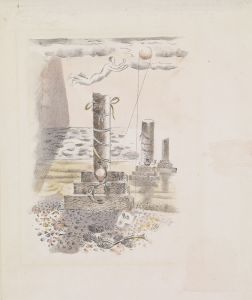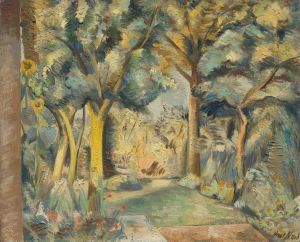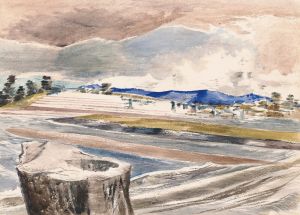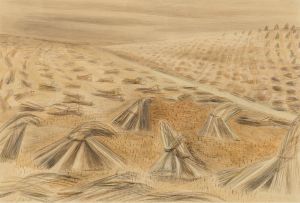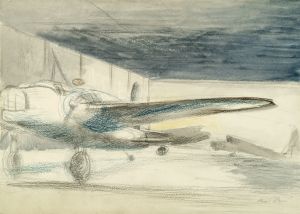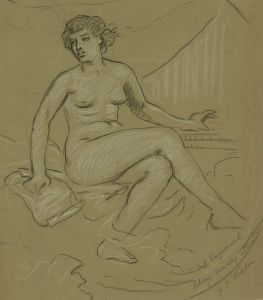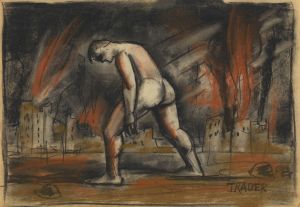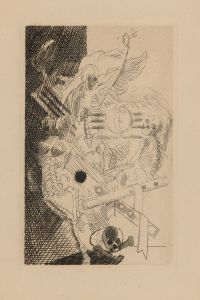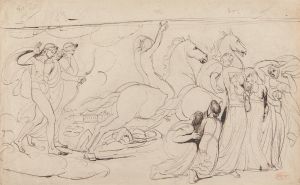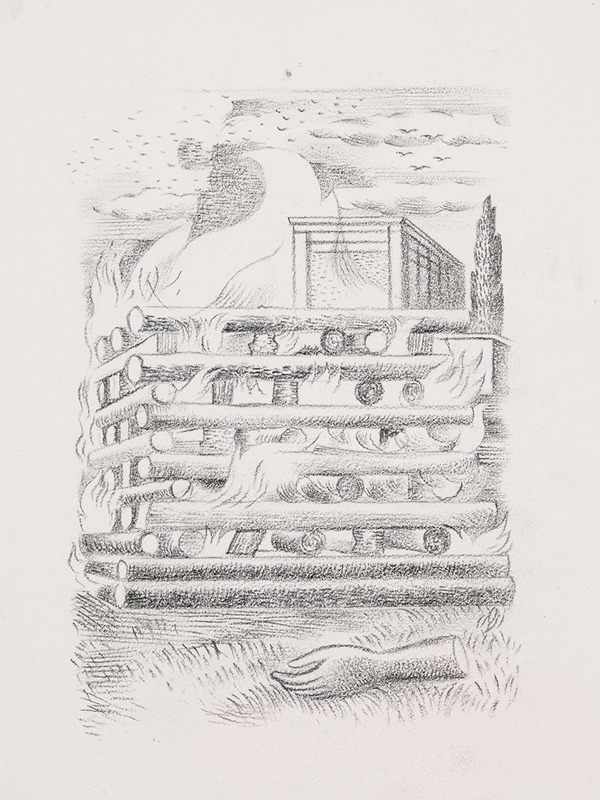
Funeral Pyre
A hand-painted replica of Paul Nash’s masterpiece Funeral Pyre, meticulously crafted by professional artists to capture the true essence of the original. Each piece is created with museum-quality canvas and rare mineral pigments, carefully painted by experienced artists with delicate brushstrokes and rich, layered colors to perfectly recreate the texture of the original artwork. Unlike machine-printed reproductions, this hand-painted version brings the painting to life, infused with the artist’s emotions and skill in every stroke. Whether for personal collection or home decoration, it instantly elevates the artistic atmosphere of any space.
Paul Nash's "Funeral Pyre" is a significant work within the context of early 20th-century British art, reflecting the artist's experiences and perspectives shaped by the tumultuous events of his time. Nash, an influential British painter, was deeply affected by his service during World War I, and his art often explores themes of destruction, transformation, and the natural landscape.
"Funeral Pyre" was created in the aftermath of World War I, a period during which Nash's work was heavily influenced by his experiences on the Western Front. The war had a profound impact on him, both personally and artistically, and he became known for his war paintings that depicted the devastation and desolation of the battlefield. These works are characterized by a haunting, surreal quality, often blending elements of realism with abstract forms.
The painting "Funeral Pyre" is emblematic of Nash's style during this period. It portrays a scene of destruction, likely inspired by the war-torn landscapes he witnessed. The composition is marked by stark contrasts and a dramatic use of color, which serve to convey a sense of both loss and regeneration. Nash's use of symbolic imagery is evident in the painting, as he often employed motifs that suggested cycles of death and rebirth, reflecting his interest in the natural world's resilience and the possibility of renewal after devastation.
Nash was associated with the British avant-garde movement and was a key figure in the development of modernism in Britain. His work during the interwar years, including "Funeral Pyre," contributed to the evolving discourse on the role of art in society, particularly in the context of post-war recovery and reflection. Nash's paintings from this period are noted for their emotional intensity and their ability to capture the psychological impact of war.
In addition to his war-related themes, Nash had a lifelong fascination with landscapes, which is evident in "Funeral Pyre." He often depicted the English countryside, imbuing it with a sense of mystery and otherworldliness. This approach is reflected in the painting's composition, where natural elements are rendered with a surreal quality, suggesting a deeper, symbolic meaning.
"Funeral Pyre" is part of Nash's broader body of work that explores the interplay between the natural world and human experience. His paintings are characterized by a unique blend of realism and abstraction, which allows viewers to engage with the emotional and symbolic layers of his work. Nash's ability to convey complex themes through his art has cemented his reputation as one of Britain's most important modernist painters.
Overall, "Funeral Pyre" stands as a testament to Paul Nash's artistic vision and his ability to translate the profound impact of historical events into compelling visual narratives. The painting not only reflects the personal and collective trauma of war but also offers a meditation on the potential for renewal and the enduring power of nature. Through works like "Funeral Pyre," Nash has left a lasting legacy in the world of art, influencing subsequent generations of artists and continuing to resonate with audiences today.







